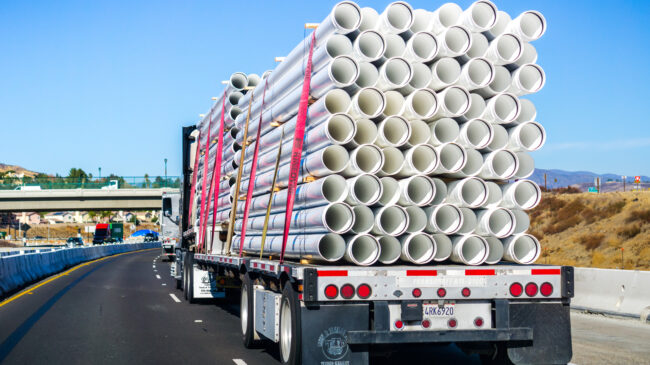Transportation Research Record: Journal of the Transportation Research Board
Volume 2677, Issue 2
https://doi.org/10.1177/03611981221147048
The Interstate Highway System is critically important to the trucking industry. In a 2019 report to Congress, the Transportation Research Board found that much of the system is wearing out. It recommended a 20-year, US$1 trillion program of reconstruction and modernization. However, in its 2021 Infrastructure Investment & Jobs Act, Congress took no action on interstate reconstruction. Several states are considering toll financing for this purpose, but the trucking industry has long opposed any expansion of tolling, despite its need for a modernized interstate system. This paper considers four concerns of the trucking industry—toll roads used as cash cows, the high cost of collection compared with fuel taxes, little value-added for users, and double taxation (tolls and fuel taxes on the same roadway). The paper describes a sketch-level spreadsheet model of a customer-friendly approach to toll-financed reconstruction, using realistic data and assumptions, applied to a generic mid-size state seeking to rebuild four long-distance interstates. The assumptions built into the model respond to the four trucking industry concerns. The model also addresses concerns of state departments of transportation over giving up some of their declining fuel tax revenues. It estimates the net present value (NPV) of fuel tax rebates over 30 years to be less than 7% of the NPV of toll revenues. Toll financing of interstate reconstruction also relieves state fuel tax revenues of the large costs of rebuilding aging interstates. This paper is intended to offer transportation policymakers a set of policy changes that respond to the legitimate aspects of the trucking industry’s expressed concerns.
The Interstate Highway System is generally considered the U.S.A.’s most important multimodal infrastructure, serving personal vehicles, intercity buses, and long-distance truck freight. At the request of Congress, a Transportation Research Board (TRB) special committee carried out a detailed study of the system’s future. Its 596-page 2019 report concluded that much of the system is aging and needs to be reconstructed; it includes many urban interchanges that are bottlenecks; and some long-distance corridors (especially those that are key truck routes) need additional lanes (1). The report estimated the cost at US$57 billion per year over 20 years and proposed a repeat of the original 1956 90% federally funded program, which would require very large increases in federal fuel tax rates.
In its 2021 Infrastructure Investment & Jobs Act (IIJA), Congress did not address interstate modernization or authorize any increase in federal fuel taxes. Despite the system’s name, its corridors are owned and operated by state departments of transportation (DOTs). In the absence of congressional action, state legislatures and DOTs may have to take responsibility for interstate modernization, which raises the question of how best to pay for a project that could cost upwards of US$1 trillion and take several decades.
The TRB report discussed toll financing of interstate reconstruction, noting that up-front financing could get needed projects under way sooner, for corridors that are toll-feasible. In a paper presented at the 2014 TRB Annual Meeting, the current author carried out sketch-level tolling feasibility assessments for each of the 50 states, finding that in all but five of them, the net present value (NPV) of inflation-adjusted toll revenues exceeded the NPV of capital and operating costs (2). In recent years, four states have commissioned their own interstate tolling feasibility studies: Connecticut, Indiana, Michigan, and Wisconsin. In addition, toll-financed replacement of major interstate bridges is under consideration in Alabama and Louisiana, while toll-financed reconstruction of specific corridors has been proposed for I-40 (Arkansas), I-70 (Ohio, Indiana, Illinois, and Missouri), I-80 (Illinois, Iowa, and Wyoming), and I-95 (North Carolina, South Carolina, and Virginia).
The trucking industry is economically the most important user of the interstate system. Those portions that are tolled (e.g., Pennsylvania Turnpike, Indiana Toll Road) derive the largest part of their toll revenue from long-distance trucking. That industry’s two national organizations—the American Trucking Associations (ATA) and the Owner-Operator Independent Drivers Association (OOIDA)—are the most vocal opponents of the increased use of tolling. Yet the trucking industry would could gain important advantages from a modernized system, potentially including dedicated truck lanes in key corridors, more durable pavements requiring less frequent repairs and resurfacing, and the replacement of obsolete and undersized “bottleneck” interchanges.
The question addressed in this paper is whether toll-financed interstate modernization could overcome the long-standing objections of the trucking industry, as well as concerns of state DOTs about the coming decline in fuel tax revenues.

